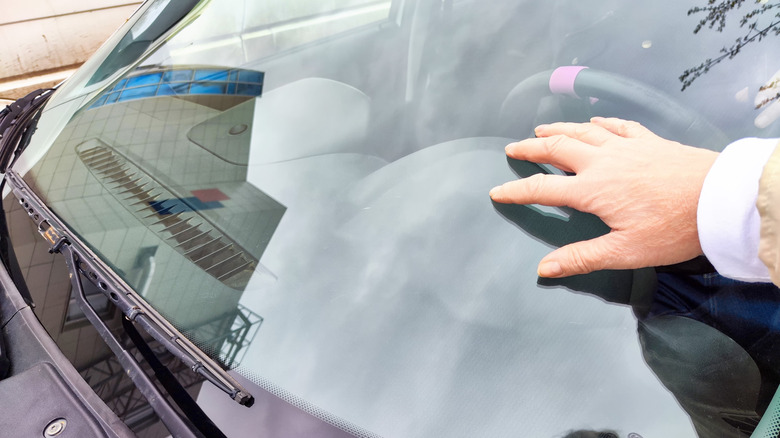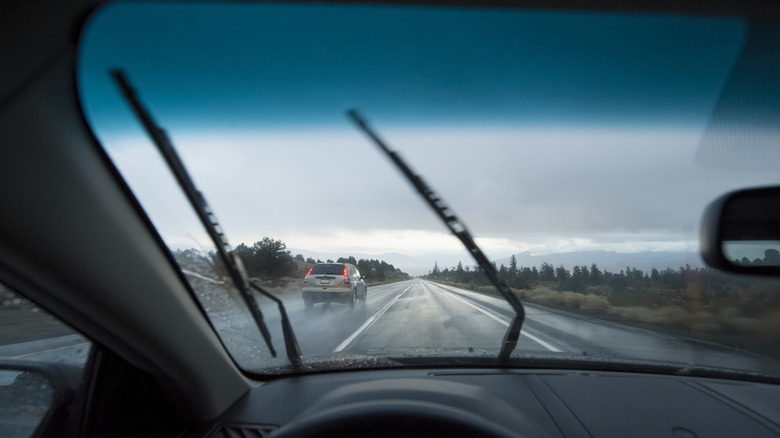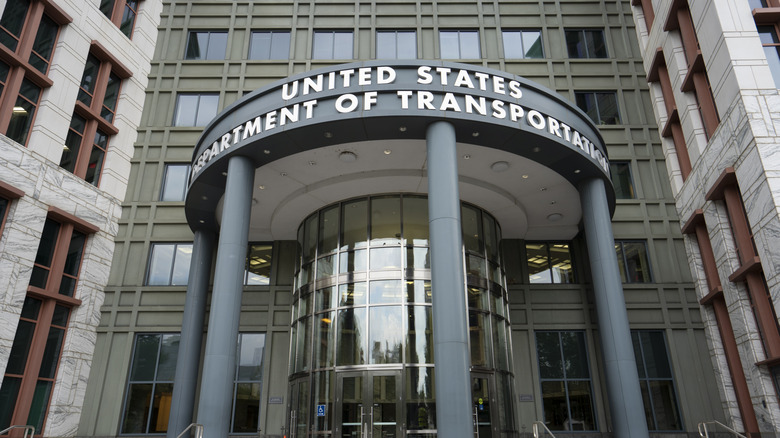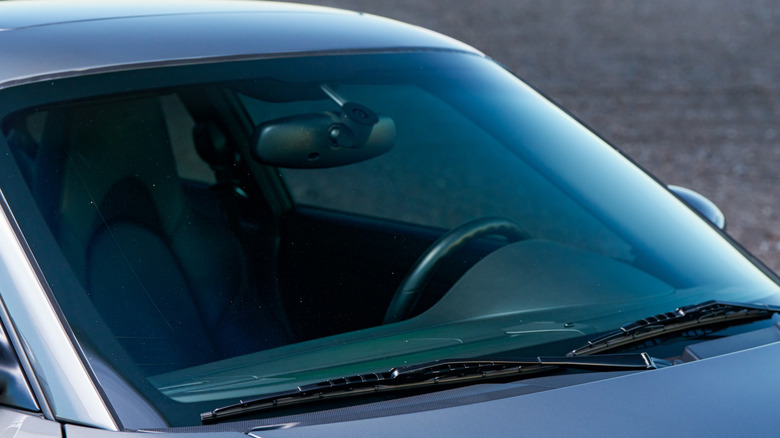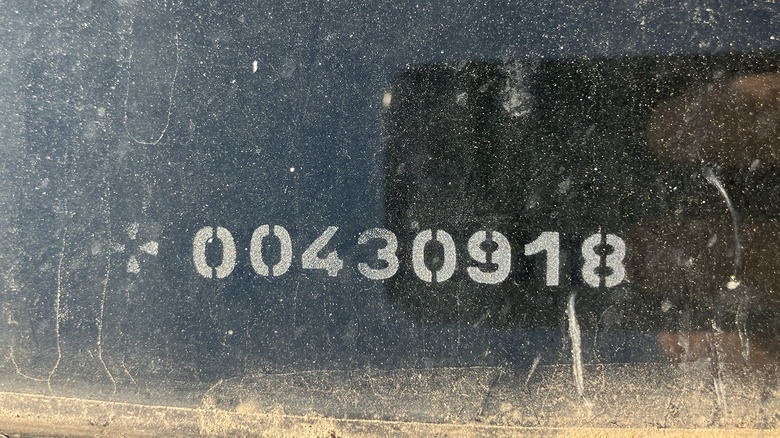What The Numbers & Letters On Your Car's Windshield Actually Mean
Ever wondered what the series of numbers and letters on your car's windshield means? These markings or codes that are either etched, printed, or affixed to your windshield on a label are not random. They provide valuable information about your vehicle's glass, especially details that will come in handy if you need your windshield repaired or replaced. Additionally, they carry some information about the manufacturing process that went into the production of your car.
The information imprinted on or applied to your windshield is like a compact manual for understanding its construction and compliance. Each letter and number has a meaning. While deciphering their combinations is the job of a glass replacement specialist, understanding the codes placed on your windshield during the manufacturing process can save you time and money someday. While DIY windshield crack and chip repair can be done without knowing exactly what you're working on, these codes come in handy if you need to replace your windshield completely.
In addition to its specifications, some codes on the windshield indicate the level of protection the glass has against the harmful rays of the sun. There is even a marking to tell you where you can add darker tint without breaking windshield tint laws in Texas or other states. The formats for these codes also vary between countries.
AS codes reveal test performance
An AS1 marking on your windshield signifies your car's compliance with the highest standards of safety and visibility as defined by the American National Standards Institute (ANSI). The "AS" stands for "American Standard" while "1" is the code for the safety and light transmission tests the glass passed. An AS1 designation means the glass has the best ratings from ANSI tests. AS1 glass is authorized for windshield use.
Glass marked AS2, while safe for side and rear windows, does not meet the same impact standards required for windshields. AS3 glass, known as privacy glass, allows less light to pass through and is typically used in rear and side windows for enhanced protection from the sun and curious onlookers.
The AS1 marking is typically found about 5 inches from the top of the windshield, as it marks the boundary where the glass maintains the standards. When adding tint, this boundary should be noted, so that the area above it may feature a darker tint. Meanwhile, the area below should maintain a high level of light transmission to ensure a clear view for the driver and retain the AS1 rating. While states have different rules for tinting, most ban dark shades of the laminate film — especially in the driver's line of sight.
Some codes indicate certification by a public agency
The DOT label on your windshield means the glass complies with the safety standards set by the U.S. Department of Transportation. The three letters confirm that the windshield was manufactured in compliance with regulations for durability, clarity, and resistance to impact. This mark often appears alongside other information, such as the manufacturer's code and production details.
Automotive glass may feature other safety certification marks based on the windshield's country of origin. For example, CCC represents compliance with Chinese standards, while JIS indicates adherence to Japanese regulations. Other country certification labels found on car windshields include AS (Australia), BS (UK), Inmetro (Brazil), KC (Korea), S (New Zealand), SABS (South Africa), and TISI (Thailand).
European vehicles use a different system for this windshield label. It starts with an "E" followed by a number identifying the specific country of certification. For instance, E1 is used to indicate Germany, E2 for France, E3 for Italy, E4 for the Netherlands, E5 for Sweden, E6 for Belgium, E7 for Hungary, E8 for the Czech Republic, E9 for Spain, and E10 for Serbia. However, some countries outside Europe, like Malaysia (E52) and Thailand (E53), also use the E designation, which can be confusing.
These labels are important since they verify that the glass met the safety protocols required in its country of manufacture. Repairmen need to know this system when replacing a windshield to ensure the new glass meets the same federal safety requirements as the old unit.
Roman numerals indicate thickness
You may also find Roman numerals on your car's windshield. They are used to indicate the durability or thickness of the glass, as well as the level of protection they offer. A windshield marked with "I" means the glass used is extra durable and strengthened. Those marked with "II" are regular types of multi-layered glass, while "III" indicates multi-layered glass that underwent special treatment, possibly for transparency. A windshield with the "IV" label is made of plastic glass; it is lighter but may offer less durability and impact protection.
Other windows on a car may be labeled differently. A "V" indicates glass with a light transmission coefficient below 70%, meaning it's more heavily tinted or less transparent. Meanwhile, a "V-VI" indicates the window is made of double glass with less than 70% transparency. In cases where no index is present, the glass typically has a transparency factor below 70% but isn't classified under the Roman numeral system. Sometimes, windows are marked with "T" or "TP" for tempered glass, which shatters into small, less dangerous pieces. Laminated glass holds together when broken and is often labeled with the letter "L." Instead of using letters, some manufacturers opt to spell out "Laminated" or "Tempered" on the glass.
Other numbers and letters
You can usually find your Vehicle Identification Number behind a lower corner or edge of your windshield, although regulation codes and approval numbers are stamped on the glass. For example, European cars have a number 43 to indicate compliance with safety regulations there. After the regulation code comes the approval number assigned to the glass. In the example shown above from the windshield of a Spanish car, the code 00430918 also appears on the side and rear glass of the car. For DOT-approved glass in the United States, the number that comes after the letters "DOT" designates the manufacturer of the glass as assigned by the National Highway Traffic Safety Administration (NHTSA).
Many windshields also have a model number that notes the origin and type of construction used in making the glass. This code often begins with a letter M and appears next to the trademark name of the glass, like Temperlite, Lamisafe, or Lamipane. The M number distinguishes the color and thickness of a specific glass from the rest of a maker's offerings, but it's common for different manufacturers to use the same M code. You'll often find the automaker and glass manufacturer's logos above these various codes.
